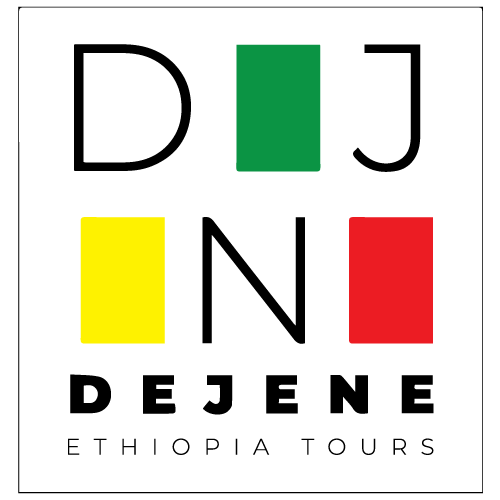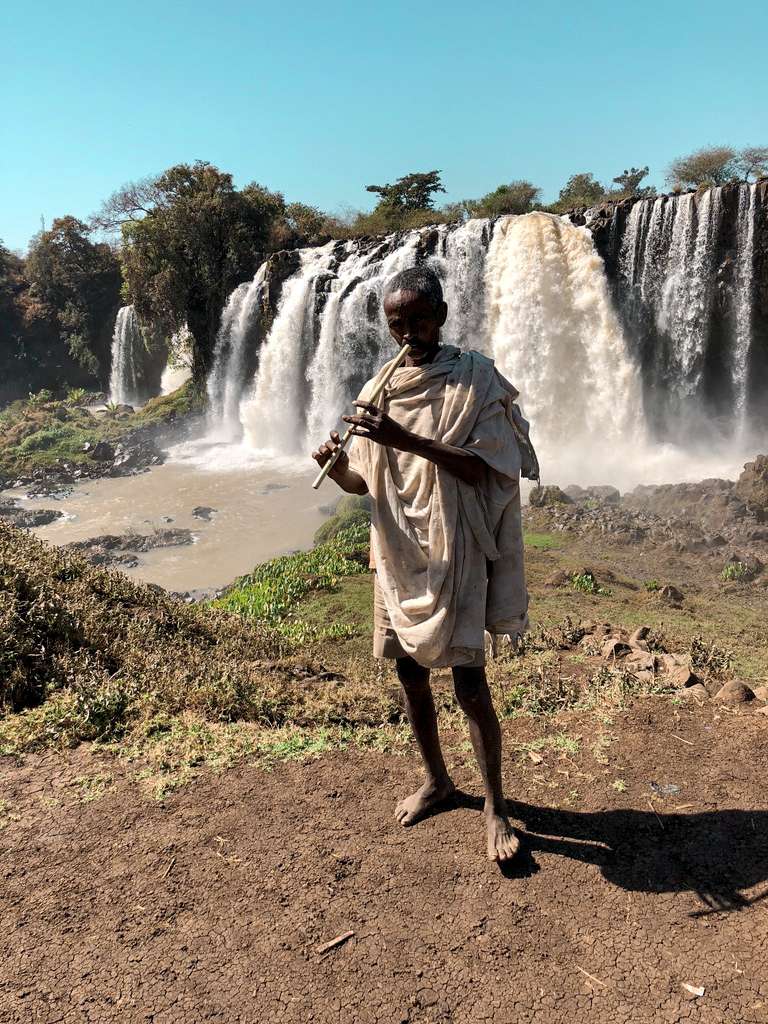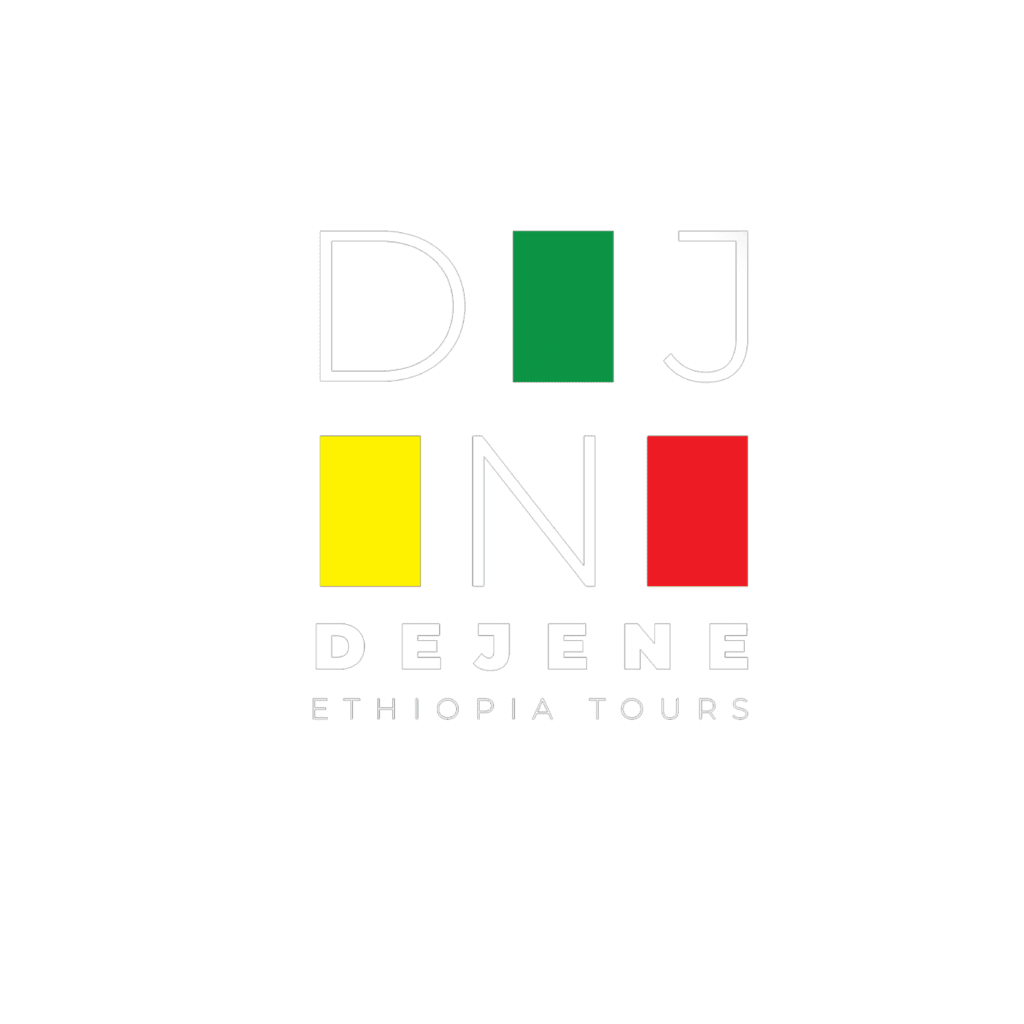16 Days Combination tour to Historic and Cultural route
Overview
Be ready to throw yourself deep into the stunning and
charismatic beauty of Ethiopia’s landscape. Get you excited
to take on the countless rewarding challenges that our
wonderful country will throw in your direction. Also be
prepared to embark on an intense journey of self-discovery
and adventure.
Provided by Dejene Ethiopia Tours.
$2,800.00
Itinerary
Day 1 - Fly from ADDIS ABABA to BAHIR DAR Stunning boat trip & unforgettable Blue Nile waterfall views
On the first day, you’ll wake up feeling refreshed and ready for your morning transfer to the airport. From here, you’ll fly from Addis Ababa to Bahirdar, where upon arrival you’ll meet with the SET team before heading on over to the hotel.
After check-in and breakfast, you’ll be taken on an incredible boat cruise over the gorgeous highlands to see the beautifully decorated Ura Kidane Mihret and Azwa Mariam, of which openly welcomes both male and female visitors.
Under the thatched roof of the monastery, there are some distinctive and colourful frescoes of religious scenes and an impressive display of illuminated bibles. These are written in “Geez”, the religious language from which Amharic is originally derived.
In the afternoon, we will take a scenic drive of 32 km to the little town of Tiss Abay, where we will walk for about twenty minutes to visit the famous Blue Nile Falls. The falls are locally known as Tiss Isat, which directly translates to, “Water that smokes”.
Those who wish to descend to the base of the falls must climb back to the other side and cross the Blue Nile in a boat in order to return to the point of departure. Overnight Bahirdar
Day 2 – Drive from Bahir Dar to Gonder PM EXPLORE GONDER
After breakfast, we will take on the 180km drive to Gonder, often referred to as the “Camelot” of Africa. It is nestled in the expansive foothills of the breath-taking Simien Mountains National Park, which will make for some truly unforgettable views. Located in the north-western part of the country was the 17th and 18th-century capital city of Ethiopia, originally founded by Emperors Fasiladas (1632 – 1667). It has been home to a number of emperors & warlords, curtsies and kings who built several castles and palaces around the large area. We will be visiting the oldest and the most impressive Gonderine structure – a magnificent castle compound including the two-storied palace of Emperor Fasiladas, which has been built of roughly hewn brown basalt stone and held together with mortar. The compound is also home to the fantastically decorated Debre Birhan Selassie Church (Light of Trinity), the bath (now a baptismal place during the Ethiopian Epiphany, January 19) of King Fasiladas and the ruined palace of Queen Mintiwab at Quisquam, where the famed Scottish explorer James Bruce is known to have regularly stayed. Overnight Gondar
Day 3 – Drive from Goder to Simien Mountain National Park Hiking
Early in the morning, we’ll be heading out on a trip to the remarkable Simien Mountain. We will be driving to Debark, which lies 100Kms away from Gonder, the Headquarters of the Simien Mountains National Park. From here, we’ll proceed to Sankaber, a further 37Kms away. This will be our trekking starting spot; it sits 3250 ms above sea level, providing one of the most stunning views of the whole continent. Day 3 will be mostly spent trekking around the many campsites. Lunch will be served by lunch boxes on top of the viewpoint – here you will see some endemic Ethiopian Birds like wattle Ibis, and some rare mammals like the Gelada Baboon. You won’t get a chance to see these marvellous creatures again! Overnight Simien mountain lodge
Day 4 – Drive from Simien Mountain national park to Axum
Early in the morning, after breakfast has been served, we will be driving through the Simien Mountains National Park escarpments to Axum – we will be travelling via one of the most scenic roads throughout the whole Ethiopia, where we’ll be able to take on the Tekeze river gorge. This trip is very long, and may well be one of the most trying, but it is certainly the most rewarding – especially for those who love to see exceptional scenery. Overnight Axum
Day 5 - Full day visit to Axum BIRTHPLACE OF ETHIOPIAN CIVILIZATIONS
You’ll wake up in the hotel, ready to experience a full-day visit to Axum; a place recognised as being the cradle of Ethiopian culture, Christianity. Axum was the very first capital of Ethiopia, holding its title until the 9th century A.D. You will visit the noticeably small but culturally rich archaeological museum, the famous Stele Park. The magnificent single block of stones, marking a staple of Ethiopia, has stood tall since the 3rd century where they have formed a part of the Saint Mary of Zion Cathedral. The original Holy Ark of the Covenant is still sheltered within the Saint Mary of Zion church, however, aside from only one holy guardian (priest), no one is allowed to the sanctuary where the ark remains. Throughout the remainder of your visit, we will be taking a trip to the subterranean tomb of king Kalbe and his son king Gebremeskel, from 6th Century AD. We will also be seeing the trilingual inscription of king Ezana before finally visiting the ruined palace and baths of the Queen of Sheba, who was the mother of king Menilik I in 950 B.C. Overnight Axum
Day 6 – Travel from Axum to Hawzen/Gheralta ON THE WAY: TIGRAY ROCK CHURCHES
After resting yourself from the busy day before, we will be leaving Axum to drive to Gheralta. On the way, we will be paying a visit to the 8-5 BC Temple of Yeha. This temple is believed to be the oldest standing worship building in the entire country and is dedicated to the God of Moon: Almuqa. We will then Proceed to the famed 6th-century Monastery of Debre Damo, established by Abune Aregawi. Abune Aregawi is one of the Nine Saints who came to Ethiopia in the 6th century (during the reign of King Kaleb) to spread the word of Christianity and introduce monastery life in different parts of the country – particularly to the northern region. The monastery is only open to male visitors and must be accessed by climbing a rope to the top of the plateau. If you would prefer to skip the monastery due to it being gender-specific or due to physical concerns, don’t worry – it is possible to visit rock churches of TIGRAY (TEKA TESFA CLUSTER) instead. Once we’ve visited the churches, we will be continuing our journey to Hawzen. Overnight Gerhalta
Day 7 – Drive from Geralta to Mekelle ON THE WAY, visit TIGRAY ROCK CHURCHES
Once breakfast has been finished, we will be heading back to the Geralta cluster to visit more of the rock churches of Tigray, of which are dated back from the 6-9th century and established by the nine saints who came from Syria. The rock churches were carved delicately into the top of the mountain during the time of Kaleb and Gebremeskel, the kings of the Axum dynasty. Throughout the day, we will visit two specific rock churches: namely Mariam Korkur (in the morning) and ABUNE YEMATA during the afternoon. Abune Yemata is arguably the most difficult to ascend but is wholeheartedly worth it to see the surrounding mountains from the top of the cliff. After visiting the churches, we will continue on to Mekelle. During the journey will stop to see a couple of other well-known rock churches: Abrehawe Atsbha and finally Wekro Cherkos. We will then arrive in Mekelle. Overnight Mekele
Day 8 - Drive from Mekele to LALIBELA
In the morning, after breakfast, we will drive from Mekele to Lalibela. The journey to Lalibela will last for an entire day, as will be passing through a few outstanding chains of Mountains via Weldia. This travel day will be a chance to admire the landscape and the people on the way, whilst allowing you time to rest and catch your breath. We will stop for a picnic lunch before eventually checking into a hotel. Overnight Lalibela
Day 9 - Full Day EXPLORE THE 8TH WONDERS OF WORLD LALIBELA
Our 9th day will be a full day at Lalibela, where we will be visiting the brilliant feats of engineering and architectures commonly referred to by many as the “8th wonder of the world.” Lalibela is home to eleven unique and master-crafted rock-hewn churches, all of which sit in a row. To find so many of these in one place truly is magical, and isn’t something that you’d want to miss. In the morning, we will be stopping to visit the first cluster of churches, built by King Lalibela in the late 12th century, which all represent the earthly Jerusalem. After we’ve stopped for a short lunch break, we will visit the second cluster of churches. These represent the heavenly Jerusalem, as opposed to the earthly visions represented before. Finally, we will visit the most beautiful and fascinating monolithic cruciform church of Saint George. In the late afternoon, we can enjoy and take part in an Ethiopian traditional coffee ceremony with honey wine, and check into an overnight hotel. Overnight Lalibela
Day 10 - fly from Lalibela to ADDIS Ababa before Driving to AWASSA ON THE WAY: TIYA UNESCO SITE
On day 10, we’ll be stopping for a quick breakfast before we transfer to the airport. We’ll fly back to Addis Ababa, where we will once again meet with SET staff (driver and guide). The flight isn’t too long, so once we arrive at the domestic terminal, we’ll have time to grab some lunch in Addis Ababa. We will now start to drive down to the south of Ethiopia; we will travel to the rift valley regions, passing by plenty of creator lakes and rift valley lakes along the way. We’ll be making a stop at the Tiya steel field: a UNESCO registered site. Once we reach our destination at Awassa, we’ll walk on the lakeshore of Lake Awassa. overnight Awassa.
Day 11 - DRIVE from Awassa to Arba Minch ON THE WAY: VISIT THE DORZE TRIBE
Early in the morning, we will take a leisurely walk along the lakeshore to see the fish market – this will also provide us with an outstanding opportunity to see the local opportunist aquatic birds! Once we’ve paid a visit to the lakeside, we’ll begin our journey to Arba Minch. This drive will take us along the scenic farmlands of the Gurage People. We will also be driving through the Wolayta farmlands, with incredible views of the lush green hills and valleys as we make our way to visit the Dorze tribe and their little village. The Dorze tribe are famed for their beehive-shaped houses and their amazing, intricate weaving skills. Weaving is a primary profession for many of the Dorze people. They are also farmers, who prevent soil erosion by ingenious terracing of the mountainsides themselves. Around their huts, the Dorze make use of their own little gardens; complete with vegetables, spices, tobacco and Enset (false-banana or Musa Ensete). We will arrive at Arbaminch, which means ‘Forty Springs’, later in the afternoon. Arba Minch takes its name from the many bubbling streams that cover the groundwater forests that lie in the flats of the town. Overnight Arbaminch
Day 12 - Drive to Arba Minch VISIT TURMI ON THE WAY TO EXPERIENCE UNIQUE BOAT TRIP & KONSO TRIBE
Early in the morning, we’ll be driving down to the lakeshore, where we’ll be able to sail out on a boat trip across the wonderful Lake Chamo. Boat trips on Lake Chamo are understood to be one of the most exquisite experiences in the entire country, so you’re sure to have an incredible time. One can spot many Hippos along the lake, as well as the world’s most spectacular concentrations of Giant Nile Crocodiles – these beasts can measure up to 6 meters, and along with the water birds, the scenery is truly unforgettable. After we’ve sailed through Lake Chamo and taken in the one-in-a-lifetime sights, we will continue on our drive. On the way, we’ll stop at KONSO to visit the Konso tribe and their King. Konso is a UNESCO registered site due to the tribe’s extensive terracing and their unique practice of making wooden grave marks for their heroes and kings. Afterwards, we will continue driving into the late afternoon, where we will arrive at Turmi, before checking in to an overnight Lodge. Turmi is known for its intricate ceremonies (such as bull jumping and traditional dance) – if there are any planned activities, your guide will inform you beforehand. You will need to pay an additional amount of money in order to attend these ceremonies. Overnight Konso
DAY 13 - TURMI - EXCURSION KARO TRIBE AT MURULLE - ON THE WAY: DIMEKA MARKET (SATURDAY/ TUESDAY) - AFTERNOONS HAMER VILLAGE
In the morning, we will begin the excursion to visit the elusive Karo Tribe. The Karo tribe is known across the world for their unusual art of body painting – the ink is sourced from entirely natural ingredients, using whatever is naturally available. Traditionally, the ink is made from flowers, soil or even animal blood! We will also be stopping to admire the scenery: the journey provides us with an unchallenged view of the Omo river from the edge of the village. Once we’ve experienced the Karo tribe, we will be visiting the Dimeka Market – held on Tuesdays and Saturdays, it’s a colourful celebration of the Hamer tribe and any goods they have to offer. When the market closes, we will drive back to Turmi in order to take an afternoon rest. We’ll then be walking back to the village in order to meet with the Hamer tribe once more. We can interact with them and learn more about their intriguing way of life! Similarly to day 12, the Hamer tribe are known for regular ceremonies and celebrations. Your tour guide will notify you of any additional fees to pay if you wish to attend. Overnight Turmi
Day 14 - Drive from Turmi to Jinka ON THE WAY: Excursion to Omorate-Dasanech Tribe
Day 14 will be another long one – we’ll need to start early in order to make the most of our time! We will be driving 73km west in order to visit the Dassench/Galeb people; these are a tribe of people who live close to the bank of the Omo River. We will use a boat made by the locals to cross the water before introducing ourselves to the semi-nomadic tribe of locals. There is very little in the way of agriculture on the bank of the Omo river, so the tribesmen need to wander in order to find supplies and necessities for their people. Once we’ve been introduced to the Omorate-Dasench people, we will continue the drive to Jinka. We will interact with other tribes along the way. Overnight Jinka
Day 15 - Drive from Jinka to Arba Minch On the way: excursion to Mursi Tribe and Key Market
After breakfast, early in the morning we will leave Jinka and head on over to Mursi village. Here, we will be visiting the Mursi tribe, known for a very attractive culture and way of life. The Mursi people are renowned for the strange custom followed by their women who, upon reaching maturity, have their lower lips slit and circular clay discs inserted. Following our excursion to the Mursi tribe, we will be visiting the Key Afer tribal marker – one of the best markets in the whole of the Omo valley. It acts as a meeting place for at least four different tribes, all of who come to sell their goods and create inter-tribal relationships. A walking guide will take us through the market, where we will be able to see the vast array of goods on offer. Finally, we will continue our drive back to Arba Minch and check into the hotel. Overnight Arbaminch
Day 16 - Game Frive through Nechisar National Park, Abarminch Fly back to Addis Ababa
This is the final day of the tour! So far, you will have seen an authentic tour of Ethiopia, gaining a unique insight on the locals as well as our history. First of all, we will be driving to Nechisar. It is named after the white grass that covers the undulating Nechisar plains, heavily contrasted against the black basalt rocks of the Amaro Mountains to the east and the black soils of the plains. Around 15% of the park is made up of Lakes Abaya to the north and Lake Chamo to the south. The water of Lake Abaya is always brown or red-brown due to iron-ferric, in contrast with Lake Chamo which has strikingly blue water complete with beautiful white sandy beaches. The national park also covers the neck of land between the lakes, which supports an expansive groundwater forest. At the foot of Mount Tabla in the south-east there are hot springs. During the game drive you will have a chance to observe different kinds of wildlife, including Zebra, lesser and greater Kudu, gazelle, baboons and various local birds. After the game tour, we will be heading back to Arba Minch for the final time. From here, we’ll fly back to Addis Ababa, giving you a final chance to enjoy some local coffee or catch up on some shopping.
$2,800.00


